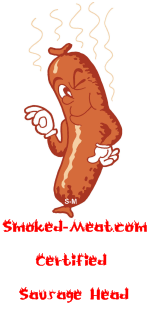Hey all,
Havent been around much for awhile. Now that Im setting aside some time to get some meat proccessing done, I could use some help.
I shot a black bear in Manitoba this spring. I would like to consume the meat, but everything I read on the net has me concerned. I see freezing meat for over 20 days helps kill the parasite, but not all. Cooking meat to 170 will also kill the parasite, but I imagine the meat will be pretty chewy and dry.
I would like to make sausage or jerky, but am worried about the low temps. I have not been able to find any info that says if curing the meat will kill the parasite. Any body have any info or experiances that might help me out?
Thanks for any advice!
Havent been around much for awhile. Now that Im setting aside some time to get some meat proccessing done, I could use some help.
I shot a black bear in Manitoba this spring. I would like to consume the meat, but everything I read on the net has me concerned. I see freezing meat for over 20 days helps kill the parasite, but not all. Cooking meat to 170 will also kill the parasite, but I imagine the meat will be pretty chewy and dry.
I would like to make sausage or jerky, but am worried about the low temps. I have not been able to find any info that says if curing the meat will kill the parasite. Any body have any info or experiances that might help me out?
Thanks for any advice!






Comment